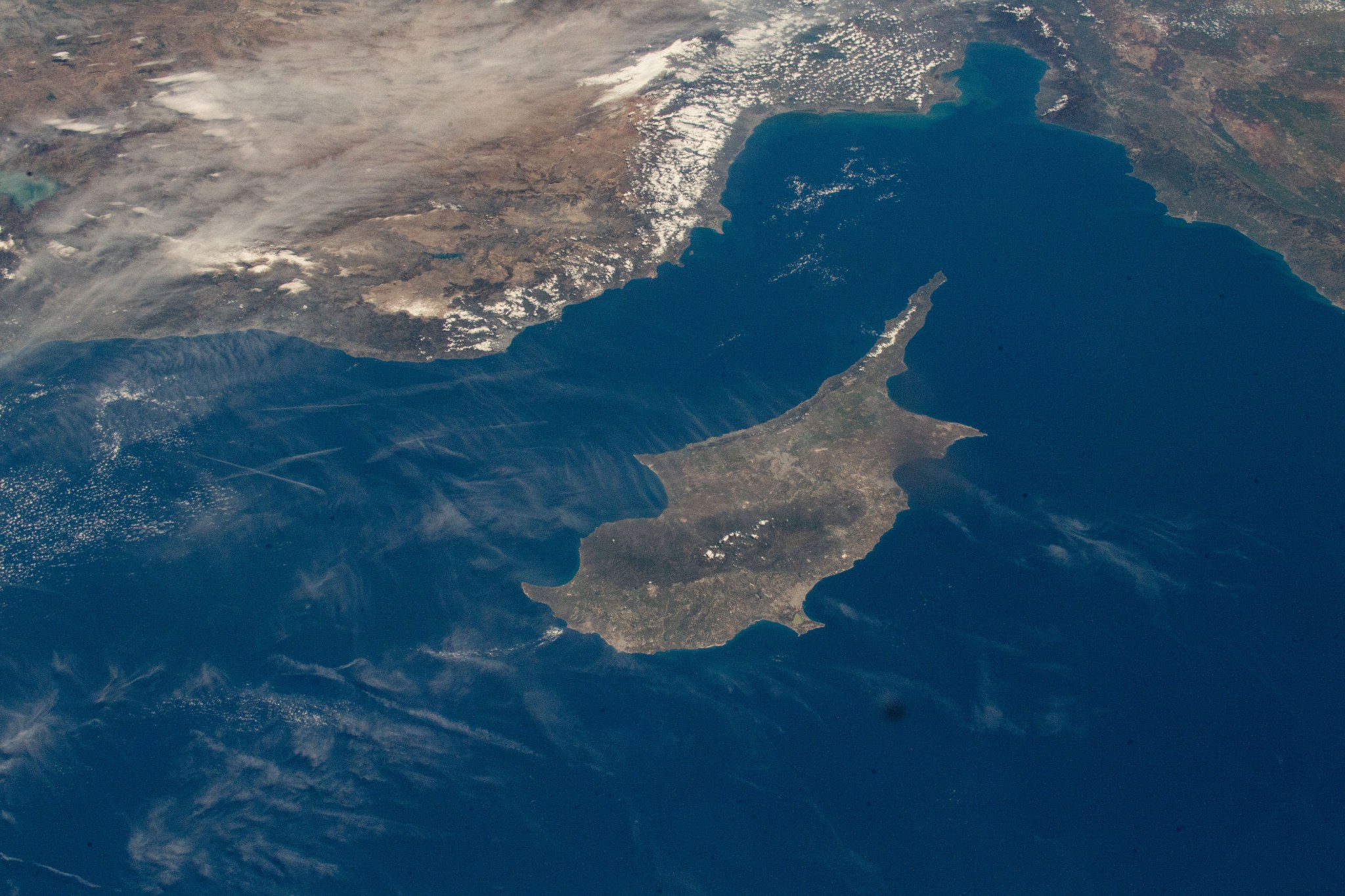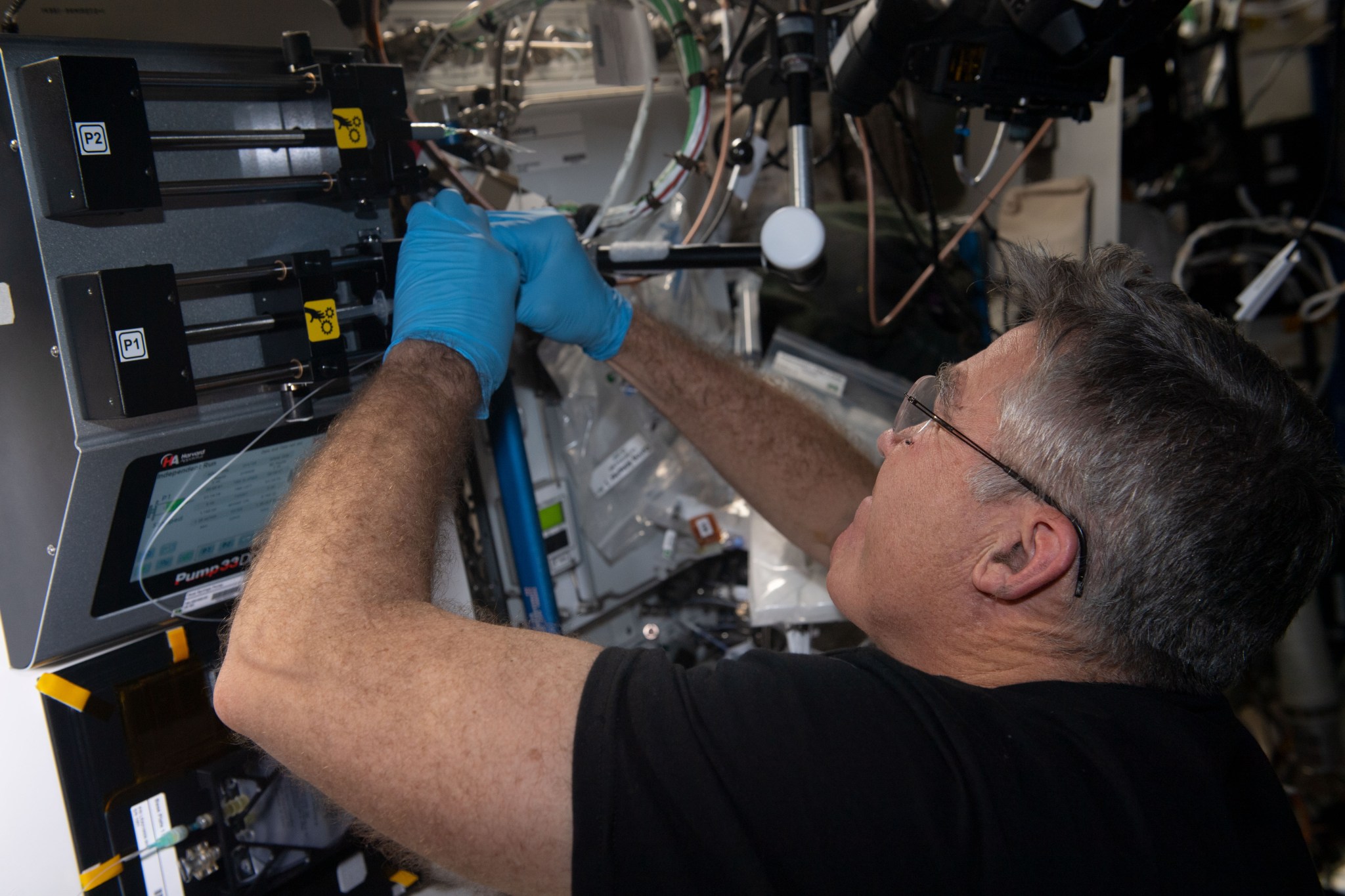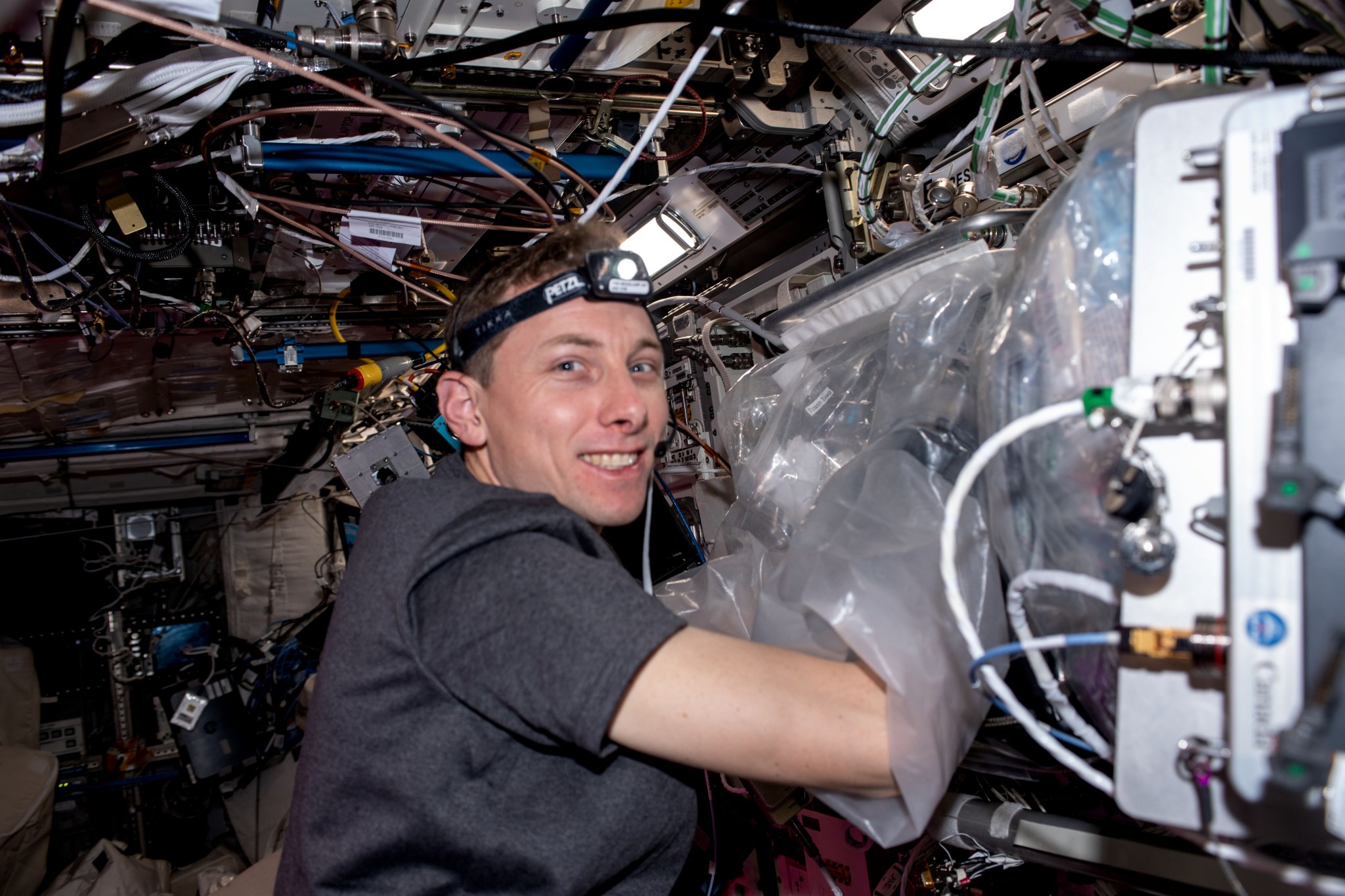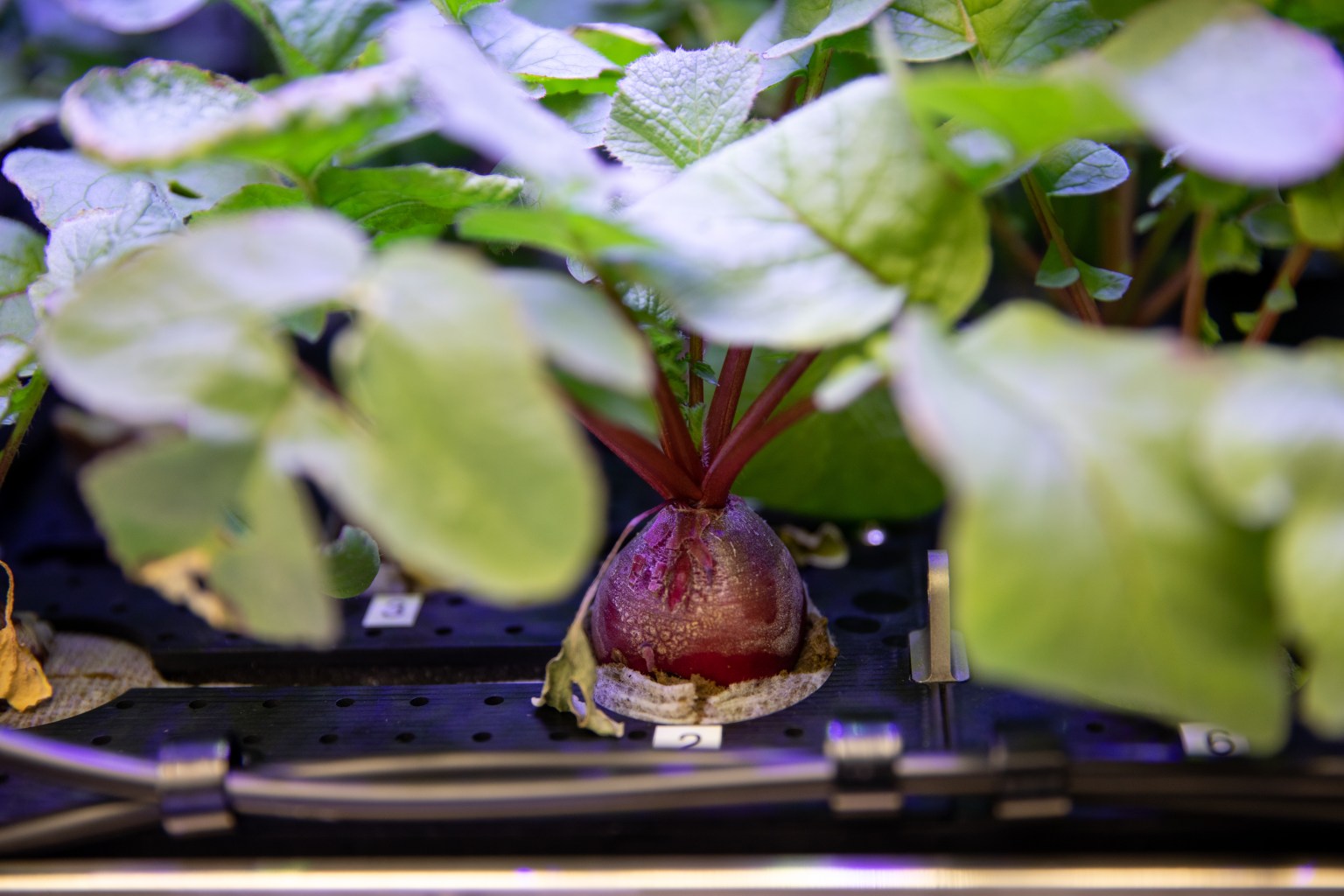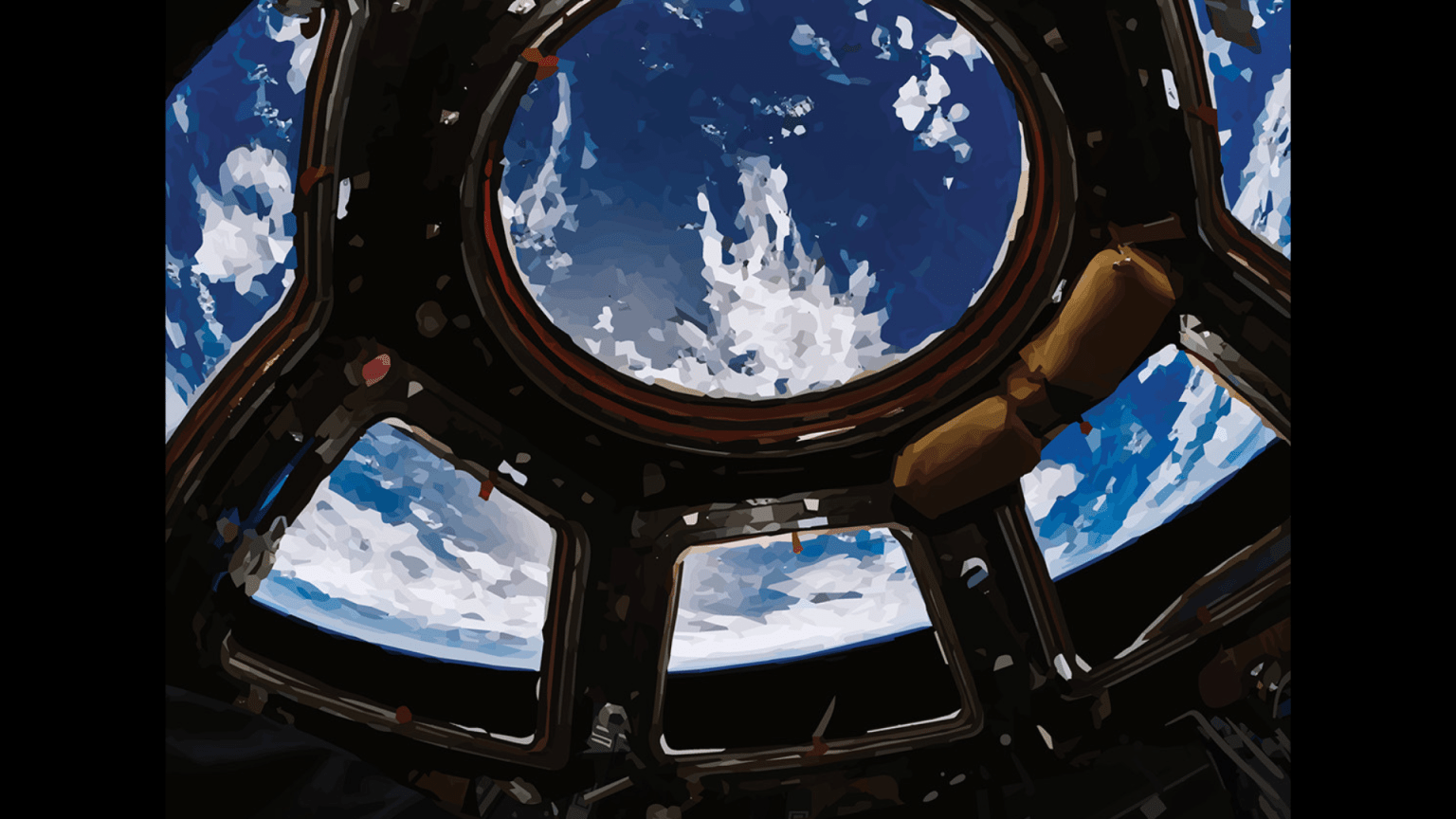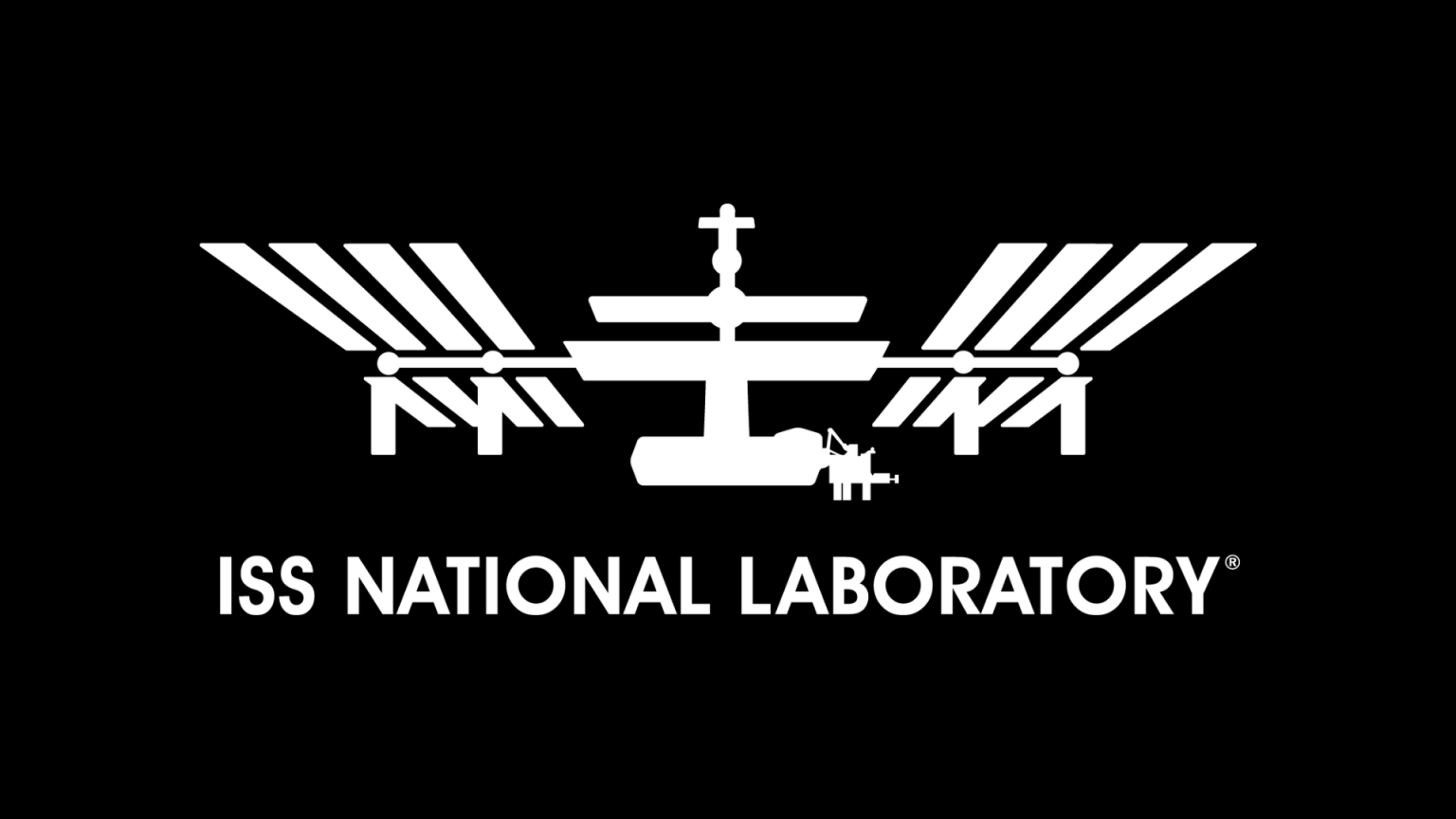Crew members aboard the International Space Station conducted scientific investigations during the week of April 3 that included examining the properties of foams and emulsions, assessing human cardiac function in microgravity, and studying the formation of biofilms and antimicrobial surfaces in space.
Here are details on some of the microgravity investigations currently taking place aboard the orbiting lab:
Properties of Foams and Emulsions
Foams are dispersions of bubbles in a liquid and emulsions are dispersions of droplets in a liquid. These substances appear in many food, consumer, and personal care products and are used in a variety of industries. Foams and Emulsions, sponsored by the ISS National Lab, examines their properties and performance in microgravity, which eliminates the influence of gravity-related factors such as buoyancy of particles. Results could expand commercial use of the space station for related studies and provide insight into the most efficient structures for manufacturing foams and emulsions on Earth. During the week, crew members performed an experiment session using a protocol that forms an emulsion by mixing an aqueous solution with an oil.
Heart Cells in Space
A previous investigation with 3D heart cell cultures in space detected changes at the cellular and tissue level that could provide early indication of the development of cardiac disease. Engineered Heart Tissues-02, sponsored by the ISS National Lab, assesses human cardiac function in microgravity and tests new therapies to prevent these potentially harmful changes. Results could help protect humans on future extended missions in space. The 3D tissue model used for this study of cardiac function has potential use in diagnosing and treating cardiac dysfunction on Earth. Crew members sampled and exchanged cell culture media and introduced the drug into the tissue chambers during the week.
Banishing Biofilms
Biofilms from ESA (European Space Agency) studies bacterial biofilm formation and antimicrobial properties of different metal surfaces under spaceflight conditions in altered gravity. Microbial biofilms, aggregations of microorganisms embedded in a self-produced slimy matrix of proteins, lipids, and other substances, can damage equipment and harbor microorganisms that might cause infections. Results could inform the selection of antimicrobial materials for future space missions. Antimicrobial surfaces have applications in health care, food, consumer goods, and marine industries. During the week, crew members activated cultures for the investigation.
Other Investigations Involving the Crew:
- BFF-Meniscus-2, sponsored by the ISS National Lab, compares a 3D printed meniscus-like construct, similar to knee cartilage tissue, to one bioprinted on Earth. Musculoskeletal injuries, including tears in the meniscus, are a leading health issue in the U.S. military, and the capability to bioprint tissue such as knee cartilage could benefit crew members who experience musculoskeletal injuries on future missions.
- Vascular Aging, an investigation from CSA, monitors changes to the arteries of astronauts during spaceflight. Results could help assess risk to astronaut health and point to mechanisms for reducing that risk and provide insight into prevention and treatment for the aging population on Earth.
- Rhodium DARPA Biomanufacturing 01, sponsored by the ISS National Lab, examines gravity’s effects on the production of drugs and nutrients from bacteria and yeast. Results could help improve biomanufacturing in space to supply future missions.
- Cardinal Heart 2.0, sponsored by the ISS National Lab, tests drugs to reduce changes in heart cell function in space. Results could support development of effective drug combinations to improve the health of astronauts and patients on Earth.
- ISS Ham Radio provides students, teachers, and others the opportunity to communicate with astronauts using amateur radio units. Before a scheduled call, students learn about the station, radio waves, and other topics, and prepare a list of questions based on the topics they have researched.
- Monoclonal Antibodies PCG, sponsored by the ISS National Lab, crystallizes and assesses various therapeutic monoclonal antibodies, lab-created immune system proteins designed to interact with specific targets such as cancer cells. Microgravity enables production of higher quality crystals, which could support less expensive development of drugs that are more stable and easier to administer to patients.
John Love, ISS Research Planning Integration Scientist
Expedition 69




























